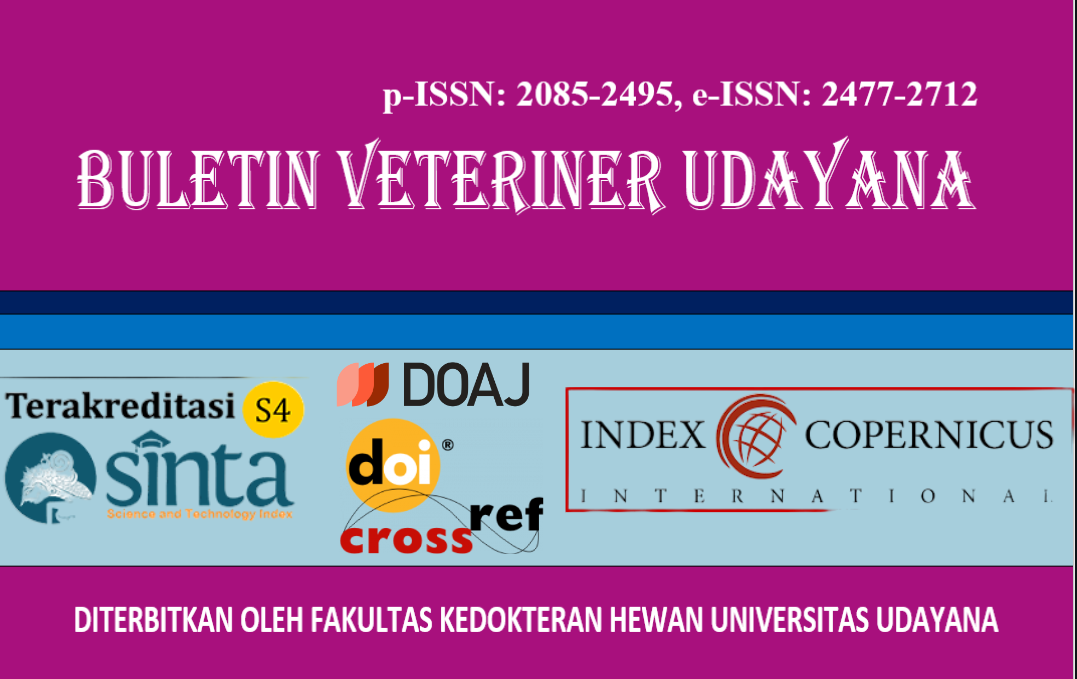HETEROPHIL-LYMPHOCYTE RATIO IN LAYING HENS VACCINATED WITH NEWCASTLE DISEASE-INFECTIOUS BRONCHITIS
DOI:
https://doi.org/10.24843/bulvet.2024.v16.i04.p29Keywords:
Laying hens, vaccination, stress, heterophil-lymphocyte (H/L) ratioAbstract
Vaccination plays a role in the formation of specific immunity against certain antigens. Stressful conditions in animals can potentially influence post-vaccination immune responses. To be able to monitor this condition, it can be seen using stress indicators in poultry, namely the heterophil-lymphocyte ratio (H/L) value. This research was conducted to determine the value of the heterophil-lymphocyte ratio (H/L) in laying hens vaccinated with ND-IB. The samples used were 10 chicken blood samples taken from 40 chickens randomly during the pre-vaccination period; one week, two weeks, and three weeks post-vaccination. The research was preceded by calculating total leukocytes and leukocyte differential, followed by calculating the heterophil-lymphocyte (H/L) ratio value from the results obtained, then analyzed using the SPSS program. The results of this research show that livestock experienced mild stress in the first week post-vaccination which is thought to have occurred due to the handling carried out. A significant increase in the heterophil-lymphocyte ratio (H/L) value occurred in the second week post-vaccination, this occurred due to the influence of environmental factors in the form of bacterial infections. In the third week post-vaccination, livestock no longer experience stress. Further research needs to be carried out using negative controls to determine the exact cause of the increase in the heterophil-lymphocyte (H/L) ratio.




